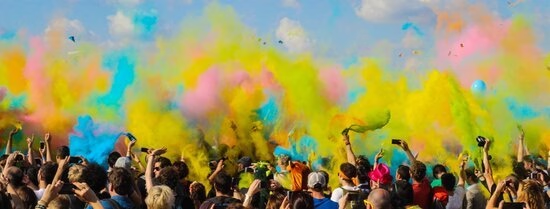The festival season is in full swing. Whether it's the alternative sounds at Down The Rabbit Hole or Lowlands, the hiphop beats at WOO HAH!, the distinct chords at North Sea Jazz or the techno rhythms at Awakenings, each of these events attract thousands and thousands of different people. Diversity and inclusion have become cardinal pillars in the festival sector and beyond. What is the role of the festival organiser in creating a space where people meet others? That was the focus of a recent study by PhD candidate Britt Swartjes and full professor Pauwke Berkers (Erasmus School of History, Culture and Communication), which resulted in the novel publication entitled “Designing conviviality? How music festival organizers produce spaces of encounter in an urban context”.
A dedication to diversity and inclusion
With the increasing emphasis on diversity and inclusion, festivals carry a responsibility to do something with it. “Many festival organisers in Rotterdam are aware and they are willing to work on diversity and inclusion at their festivals,” says Britt, “the uncertainty lies in how to do that exactly.”
“It was interesting to see how much of your experience as a festival-goer is actually designed, rather than something you just create yourself.”
During the research, Britt and Pauwke interviewed 31 organisers from popular music festivals in Rotterdam. “There is often this idea that festivals are the ideal spaces for people to connect with others they otherwise wouldn’t meet. We were interested in finding out why that was the case and how a place like this can be designed.”
Research outcomes: designed conviviality?
What surprised the researchers the most, was the importance of material elements in group formation. “As cultural sociologists, we are both very aware of the role music can play and how it can bring people together or drive them apart,” Britt explains. “What we did not expect to find is the important role that the material aspects of a festival space – such as thresholds, nets, weird corners and paths – play in how people experience a space and how they move in it.”
“Organisers see their separate stages as islands, each attracting a specific audience.”
“As a festivalgoer, I felt it was interesting to see how much of your experience is actually designed, rather than something you create yourself. The fact that you might feel (at least physically) safe in a particular environment, that you enjoy being in a space and that you meet new people, may not just be because you take the initiative and shape your own experience, but is to a large extent also because the designers of that space kept all of that in mind.”
Stages as islands: how to make people mingle
The study pointed out several ways in which festival organisers guarantee encounters within the festival space. “We find that organisers see their separate stages as islands,” says Britt. “Each island attracts a specific type of audience, for example related to gender-sexuality, race-ethnicity and social class. To create possibilities for interaction between those groups, organisers focus on stimulating movement between these islands." They argue that they can do that in four ways:
- Mixing by spatial design. For example, by switching programming at different stages (rather than focusing on one genre), people will have to move around to be able to see the performances that they like and thereby cross ‘others’.
- Mixing by timetable design. By allowing for time between different programme parts people get the opportunity to move around.
- Mixing by programme design. Organisers sometimes mix and match different genres at one stage, thereby creating a more accessible space for different people to meet.
- Mixing by visual design. Movement is stimulated through visual design and signage, creating a space that allows for discovery and where you need to walk around to get food or see parts of the program.
About the researchers
Britt’s PhD research is part of the European funded project Festiversities, which focuses on festivals as public spaces where people from diverse backgrounds get to meet. “When starting out,” Britt explains, “our collective focus within this project was on providing a broader understanding of festivals as spaces where people meet from varying perspectives, including organisers and audiences. For most of us, doing the research during the pandemic meant that we shifted our focus to the production-side entirely. For me, this also meant shifting my focus to organisers and other workers at festivals and doing interviews with many more festival organisers than we planned at the start. This paper is the first article in my PhD resulting from this process.”
Pauwke is full professor in the Sociology of Popular Music and Britt’s supervisor within this project. He collaborated with other researchers in Denmark, Ireland, Poland and the United Kingdom to bring the project into existence. It fits with many of his previous and coming work as a full professor in Inclusion, Wellbeing and Resilience.
- PhD student
- Professor
- More information
- Related content

